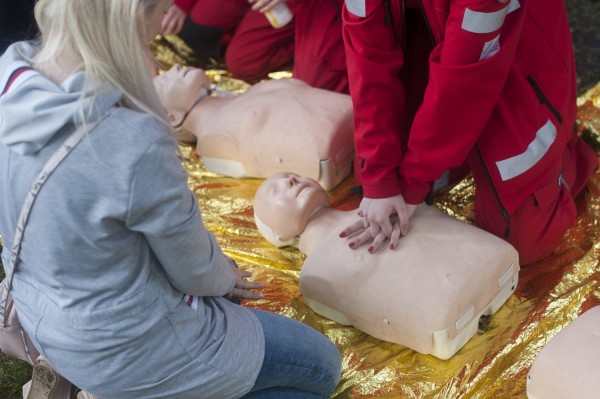The Real Meaning of BLS: Basic Life Support

BLS or Basic Life Support is like what its name suggests; to give basic support to prevent or handle life-threatening situations. It is a medical program in which an individual is given specific knowledge to assist life-threatening situations like spinal immobilization, hemorrhage control, basic first aid, cardiopulmonary resuscitation, and stabilization of fractures.
So in simple words; BLS or Basic Life Support training is the medical program that teaches the health caretakers about how to look after difficult situations.
Is a Basic Life Support course really important?
Yes, BLS is a really important course to take because:
-
It comes in use when the situation seems out of control. So if you are BLS certified, you'll be capable enough to handle such situations.
-
BLS certificate holds great importance in the medical field. Hence if you own one; you can probably stand out of the crowd.
-
Besides this, BLS certification is also important in some countries. So while perusing the certificate you are fulfilling the requirements too.
A smart overview of how BLS certified works:
Is the patient responding?
To begin with the process; first, you need to see if the patient is responding. You can do this by shouting into the ears of the patient or gently shaking the patient. You can also ask them "Can you hear me?"
In case if the patient is unresponsive, you need to immediately seek help from AED or Automated External Defibrillator.
Make sure there is no blockage:
Tilt the head open the jaw thrust. See if there is any blockage caused in the airways by vomit, tongue, or maybe any other situation. However, while tilting the head make sure that there is not cervical surgery. Otherwise tilting the head can more damage or harm the situation.
Check if the patient is breathing
Lay down your head in a tilt position on the face of the patient and try hearing the respiratory movements. Also, try to observe the chest movements. These both are very important aspects to evaluate the patient's condition. It can take up to 10 seconds to get results of the respiratory system test. If breathing is normal, you can look for help. But if the patient cannot breathe, follow the next step.
What if the patient isn't breathing?
In case if the patient isn't breathing; call the ambulance and rush to the hospital. It is highly recommended to save emergency contact numbers on your phone. Meanwhile, the ambulance arrives, you should give chest compression
For chest compressions, you have to place your hand in the middle of the sternum and firmly lock your fingers. Also, firmly maintain the elbow position vertically. Give pressure on the sternum for around 5 to 6 cm and release it. It is advised to repeat the process 30 times, 100 to 120 times per minute.
The other rescue part is to provide oxygen through the mouth. Tilt the head, gently close the nostrils of the nose, place your lips over them, and blow it for 1 second. It is better if you have a volunteer to help you with this. One can provide chest compressions; the other can provide oxygen through the mouth.
The above-mentioned steps can be updated with the passage of time and evaluation of the medical industry. However, things would stay around this. Basic Life Support is a very helpful medical course that can save one's life.
Along with BLS, there are other several rescue courses like CALS or PALS. These courses are essential in the medical field. Just like BLS, these two courses also works as a lifesaver for many!
Nov 10, 2020 10:00 PM EST





